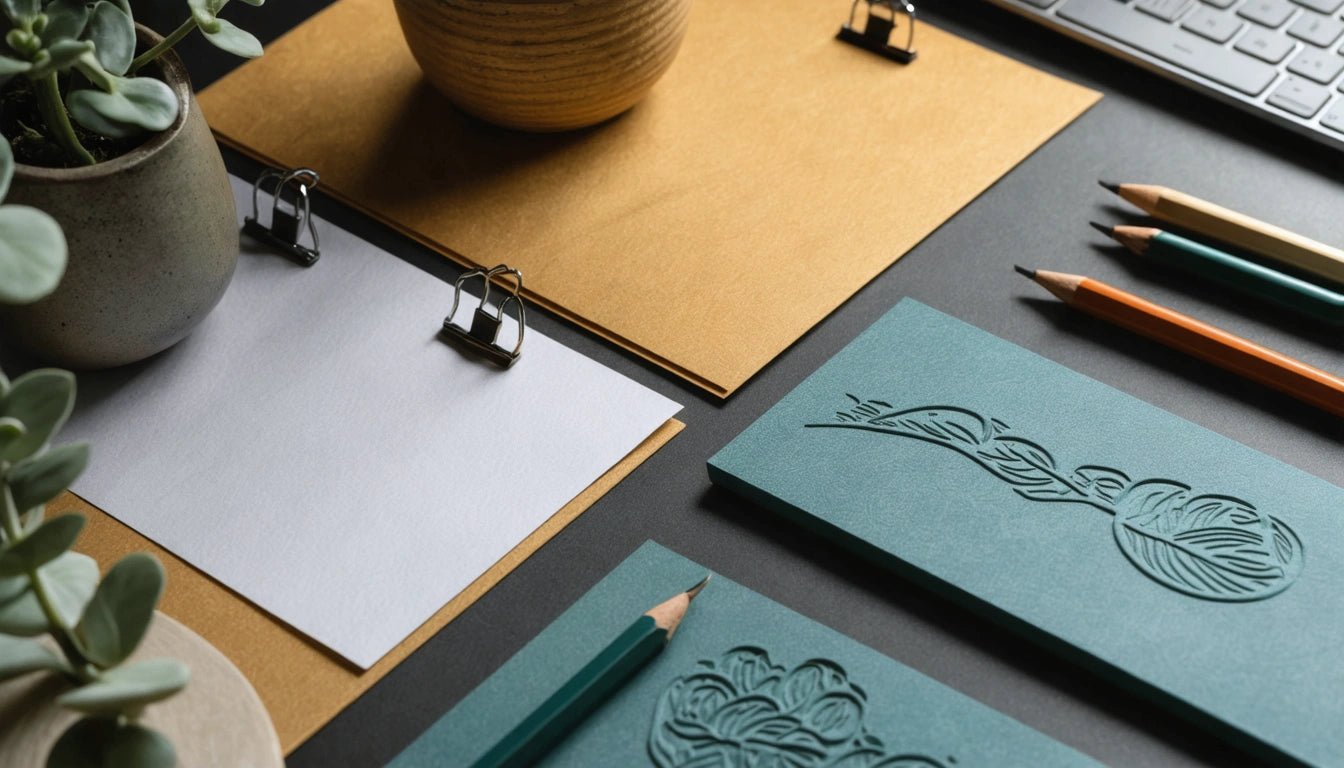Table of Contents
Debossing vs Embossing: Understanding the Key Differences and Uses
In the competitive world of product packaging and brand identity, tactile elements can make a significant difference in consumer perception and product recognition. Two popular techniques that add dimensional texture to packaging are embossing and debossing. While they might seem similar at first glance, understanding the distinction between deboss vs emboss techniques can help brands make strategic decisions about their visual identity and packaging design.
Basic Definitions: Embossing vs Debossing
Embossing and debossing are finishing techniques used to create raised or recessed designs on various materials. Embossing creates a raised design that stands out from the surface. The design elements protrude upward from the material's plane, creating a three-dimensional effect that can be both seen and felt.
Conversely, debossing creates an impression that presses into the material, resulting in a recessed design. As explained in resources about understanding the differences between deposing and debossing, the debossed elements appear sunken into the surface, creating depth rather than height.
Visual Differences and Tactile Effects
Light and Shadow Play
One of the most notable differences between embossed vs debossed designs is how they interact with light. Embossed elements catch light on their raised surfaces, creating highlights that make the design stand out. This effect can make logos or text appear more prominent and eye-catching.
Debossed elements, by contrast, create shadows within the recessed areas. This subtle shadow play can create a sophisticated, understated look that many luxury brands prefer for their packaging.
Tactile Experience
Both techniques create a tactile experience, but in different ways. Embossing provides a positive tactile experience where fingers can trace over raised elements. Debossing offers a negative tactile experience where fingers can feel the indentation.
This tactile dimension adds significant value to packaging, especially for specialty products like premium pre-rolled cones where the unboxing experience is part of the product's appeal.
Applications in Packaging and Branding
The choice between debossing and embossing often depends on the specific application and desired effect.
When to Choose Embossing
- For maximum visibility and immediate visual impact
- When working with thicker, more substantial materials
- For logos or text that need to stand out prominently
- On packaging where the raised elements won't interfere with stacking or storage
When to Choose Debossing
- For a more subtle, sophisticated look
- When working with delicate or thin materials that might distort with embossing
- For designs where you want to create depth without affecting the overall profile
- When you want to add metallic foil or color to the recessed areas
Both techniques can be effectively used for various types and styles of logos, depending on the brand identity and packaging goals.
Production Process and Technical Considerations
The production processes for embossing and debossing share similarities but have important differences.
Embossing Process
Embossing requires two dies: a female die (recessed) and a male die (raised). When pressed together with the material between them, the male die pushes the material into the female die, creating a raised design. This process can be done with or without heat, depending on the material.
Debossing Process
Debossing also uses two dies, but in the opposite configuration. The female die is placed on top, and when pressed, it pushes the material down into the male die, creating a recessed design.
Both processes require precision in die creation and alignment to ensure clean, crisp results. The choice of material also impacts the quality of the final effect, with thicker, more pliable materials generally yielding better results for both techniques.
Design Considerations for Both Techniques
Typography and Detail Level
When designing for embossing or debossing, typography considerations are crucial. Both techniques have limitations regarding the level of detail they can accurately reproduce.
For embossing, very fine details might not maintain their integrity when raised. Similarly, debossing very small or intricate designs might result in unclear impressions. Generally, bold designs with clean lines work best for both techniques.
File Preparation
Proper file preparation is essential for successful embossing or debossing. As outlined in guides about choosing the best file format for your logo, vector files are preferred for these techniques as they can be scaled without loss of quality and provide clean lines for die creation.
Future Trends in Tactile Branding Techniques
As packaging continues to evolve as a critical touchpoint between brands and consumers, we're seeing innovative combinations of embossing and debossing with other techniques. Blind embossing (without ink) is gaining popularity for its subtle elegance, while combination techniques like debossing with foil stamping create striking visual contrasts.
Sustainability considerations are also influencing these techniques, with brands looking for ways to create tactile experiences using eco-friendly materials and processes. The tactile dimension that embossing and debossing provide is becoming increasingly important in a digital world where physical touchpoints with brands are becoming rarer.
Understanding when to use debossed vs embossed techniques gives brands a powerful tool in their packaging arsenal. By carefully considering the material, design, and desired effect, brands can create packaging that not only protects their product but also communicates their values and enhances the overall customer experience.



















